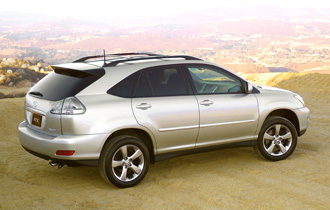
Canada’s auto industry remains on solid footing despite downsizing by the Detroit Big Three auto makers, because Japan-based manufacturers have filled the gap, a Canadian Economic Observer report says.
Last year, Japanese auto makers produced about 900,000 vehicles in Canada – double the level they manufactured in 1998 – for a 36% share of the domestic market.
Exports by Ford Motor Co., General Motors Corp. and Chrysler Group peaked at C$51 billion ($47.7 billion) in 1999 and since have fallen by one-third. Conversely, exports by Japanese makers have risen by one-third, from C$10.1 billion ($9.4 billion) in 1999 to C$15.9 billion ($14.9 billion) in 2006.
“On the whole, Canadian consumers are now buying almost as many overseas models as North American brands,” the report says. “In the car segment, more overseas brands than North American have been sold in Canada every year since 2001. Even in the popular (SUV) segment, overseas brands have practically caught up with the traditional Big Three.”
The report says members of the Japan Automobile Manufacturers Assn. of Canada – Toyota Motor Corp., Honda Motor Co. Ltd. and CAMI Automotive Inc., a joint venture between Suzuki Motor Corp. and GM – have made more inroads in Canada than in most other countries.
“The shift away from the traditional Detroit-based firms has many wide-ranging implications, from how consumers finance their new-vehicle purchases to where they get these vehicles serviced and repaired, to how they are sold into the used-vehicle market,” the report says.
Most of the drop in North American manufacturers’ production was in pickup trucks, with only half as many built in Canada last year as in 1999.
“This sharp drop partly reflects that Japanese manufacturers have not entered this market until recently,” the report says.

While the Japanese currently have only a toehold in the truck market, they are close to taking the lead in passenger cars. Of the 900,000 vehicles they built last year, 844,000 were cars.
“Only because North American manufacturers still dominate the truck segment are they still a major player in total sales,” the report says.
Between 1997 and 2006, the growth in net exports of vehicles (including chassis) by Japanese auto makers in Canada helped offset the slump in overseas shipments by North American manufacturers.
“In 2006, the net exports of Toyota, Honda and CAMI, together, equaled 68% of the net exports of the Detroit-based manufacturers,” the report says. “As recently as 1997, their share was negligible. Only a shortage of production capacity slowed the growth of their net exports.”
Japanese auto makers have built many parts plants in North America, the report notes, eliminating the need to import components from overseas.
“This contradicts the impression, held by many, that the Japanese-owned plants in Canada only assemble high value-added parts, such as engines imported from abroad,” the report says. “In reality, most Japanese firms make their engines locally.”
The report quotes the Nikkei Weekly as saying the local share of parts Honda uses in its North American production is currently about 80%.
“Toyota reportedly uses 90% local parts to make the Lexus RX 330 SUV at its Cambridge, ON, plant – the first Lexus model to be built outside Japan,” the report says.
Japanese auto makers in Canada boosted the share of parts imported from China and Mexico to 6% and 5.2%, respectively, in 2006. Meanwhile, imported parts from Japan fell to 9%, while those from the U.S. remained at about 80%.




